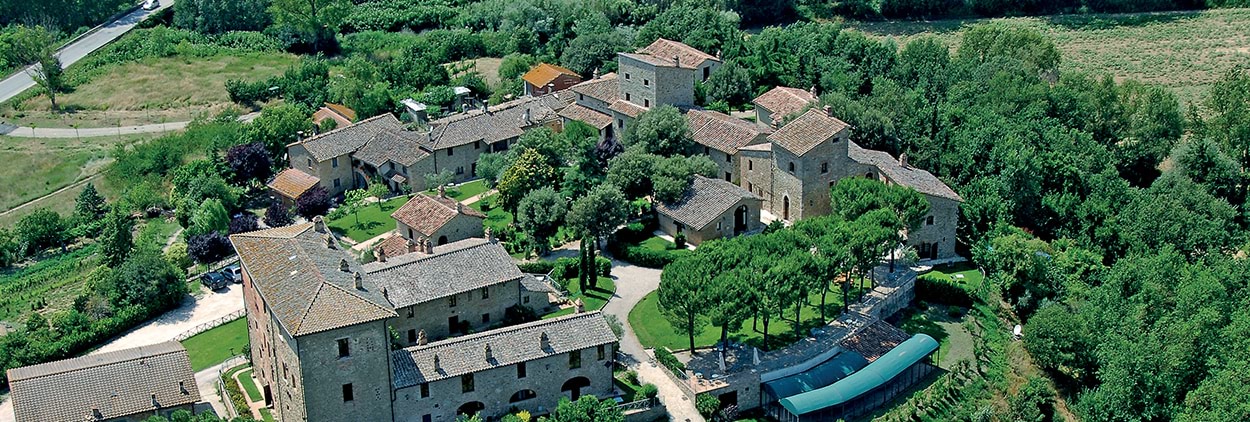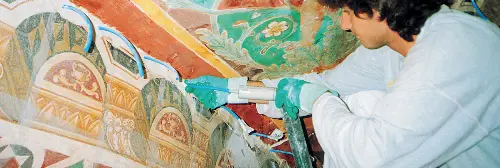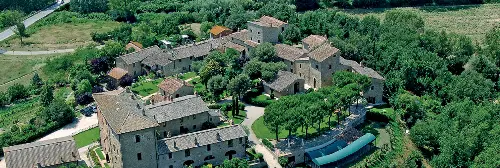
Interview with Gaddo Della Gherardesca: “We need to be romantic, but also a little bit crazy”
The National President of the Italian Historical Houses Association (Associazione Dimore Storiche Italiane, ADSI) talks about his commitment to conserve and maintain historical houses and his determination to get them fully recognised on a constitutional level.
New projects include a new website and new legal possibilities, he talks to us about the critical importance of tourism connected with art, the demands of a new kind of international consumer and the investment required to attain increasingly high standards.
The National President of the Italian Historical Houses Association (Associazione Dimore Storiche Italiane, ADSI) talks about his commitment to conserve and maintain historical houses and his determination to get them fully recognised on a constitutional level. New projects include a new website and new legal possibilities, he talks to us about the critical importance of tourism connected with art, the demands of a new kind of international consumer and the investment required to attain increasingly high standards.
Last year Gaddo della Gherardesca was appointed the national president of the Italian Historic Houses Association for the three-year period from 2016-2019. A member of one of the oldest families in Tuscany and a descendant of Count Ugolino, this Florentine nobleman has also been a member of the National Board of the Italian Historic Houses Association and the Italian representative to the European Historic Houses Association since 2015. An expert in the media and communication, he is also the vice president of PRS, a publicity agency that operates in the satellite television, radio and web industry.
Last year you were appointed president of the A.D.S.I. – Italian Historic Houses Association. Can you explain what this association does?
On 27th April 2016, feeling a deep sense of responsibility I enthusiastically accepted the honour and duty of leading the Italian Historic Houses Association, whose mission it has been for the last 40 years to protect, enhance and manage private Italian historical-cultural assets. A very cutting-edge issue, since the beauty and sheer wealth of our cultural heritage are finally at the focus of public debate and opinion, even though – however – we are well aware that much needs to be done to ensure the constitutional importance of privately-owned historical/artistic assets is duly acknowledged.
During the convention on “Culture and business: Italy’s finest look to the future”, which was held in Rome on 6th May, you claimed that “we need to be romantic, but also a little bit crazy to hold onto properties like ours”. Can you explain what you meant?
I believe what I said sums up the attitude of owners of property declared to be of historical-artistic interest: romantic, because only the kind of “love” you have for your own house can justify the sheer energy and devotion it takes to look after not just the “walls” but also the heart and soul of your home - crazy, because this is certainly a significant gamble, but only by taking chances and defying logic and rationality can important results be achieved.
Renovating and conserving old buildings is not just important in relation to history and art, most significantly it means enhancing them and turning them into an important driver for the Italian economy. Do you agree or disagree with that?
I most certainly agree, because it is not just a matter of looking after this heritage, to which the owners have always dedicated their best efforts, as far as they could, but also, as you said, of enhancing it, so that it can really express its huge financial potential: hospitality, tourism, quality food/drink production, building, the landscape and craft all revolve around a system that already plays an important part in the local economy and which, if properly supported, could grow exponentially.
Italy’s historical-artistic heritage – if handled and promoted properly - could have enormous financial potential. So, you think that hospitality, food/drink tourism and the builtscape could, potentially, have notable implications on the surrounding territory?
That is what we hope, indeed it is our aim - through constructive dialogue with the institutions and also local financial operators - to work together to find new ways of developing new projects that help the nation grow.
No more property tax on historic houses, an extending of the ‘ArtBonus’ detaxation to include private operators, land registration reform: these are just some of the issues personally involving the owners of thousands of historic buildings that are, indeed, protected but extremely expensive to maintain. As an association, what kind of relations do you have with national and local institutions and what kind of help do they provide?
Bearing in mind that our country is going through a financial recession, a crisis in its overall system and, if I may say so, an ethical-cultural crisis, we ought to consider ourselves lucky because the institutions have, for some time now, been paying us more attention and being more aware of our needs, so that we have been able to jointly work out how we might improve our situation. Taxation is certainly the key issue, but not because the owners of historic houses expect unfair privileges, but we need to understand how much they already have to pay and the difficulties they now find themselves in. We must rid our heads of the idea that historic properties are “luxury” or “rich people’s assets” that need to be taxed differently (if not at higher rates), because we need to make it clear that easing the taxation on a protected property does not mean “helping the owner” but, rather, helping the “cultural heritage” and allowing the owner of a property to conserve, protect and pass it on to future generations. Of course, we have been aware for years that this is an uphill battle and that our properties, which are subject to special constraints, are increasingly expensive to maintain and manage, generate lower profits and no longer receive the financing referred to in the Cultural Heritage Code. To which we need to add constant rises in taxation and, in some cases and under certain circumstances, the inevitable decline and abandonment of the properties in question.
In Italy only 13% of tourist bookings are made online compared to 24% across Europe. The Web is now an indispensable means of promotion and of informing the world about Italy’s culture, history and traditions, including historic houses. Do you have any projects in this realm?
In 1970 Italy was the world’s leading cultural tourist destination, but now we are only ranked fifth, despite being the country with most UNESCO sites in the world.
I think the cause of all this is that we are no longer as competitive as we used to be. The A.D.S.I. has set up a website called www.dimorestoricheitaliane.it aimed at promoting nothing but monumental historic properties. At the same time as creating this website, we are trying to get our associates to adopt a more aggressive approach to online promotion, so that Italy’s private cultural heritage is more appealing to international travellers. Despite being a relatively recent project, in just under two years we have managed to reach average monthly online traffic of 25,000 different visitors, according to search engine ratings.
In the third millennium, tourism will not settle for “just” history and monuments. It needs infrastructures and services of the appropriate standard - from Wi-Fi to air-conditioning, sound insulation and modern finishing touches - to compete with other countries around the world. What do you think about that?
I think that is quite right, because while we ought to look back into the past so as not to forget our roots or our historical heritage, at the same time we need to comply with the increasing demands of international travellers. Our historic houses meet the demand for experiential tourism and, at the same time, can also provide all the appropriate comforts and services.











